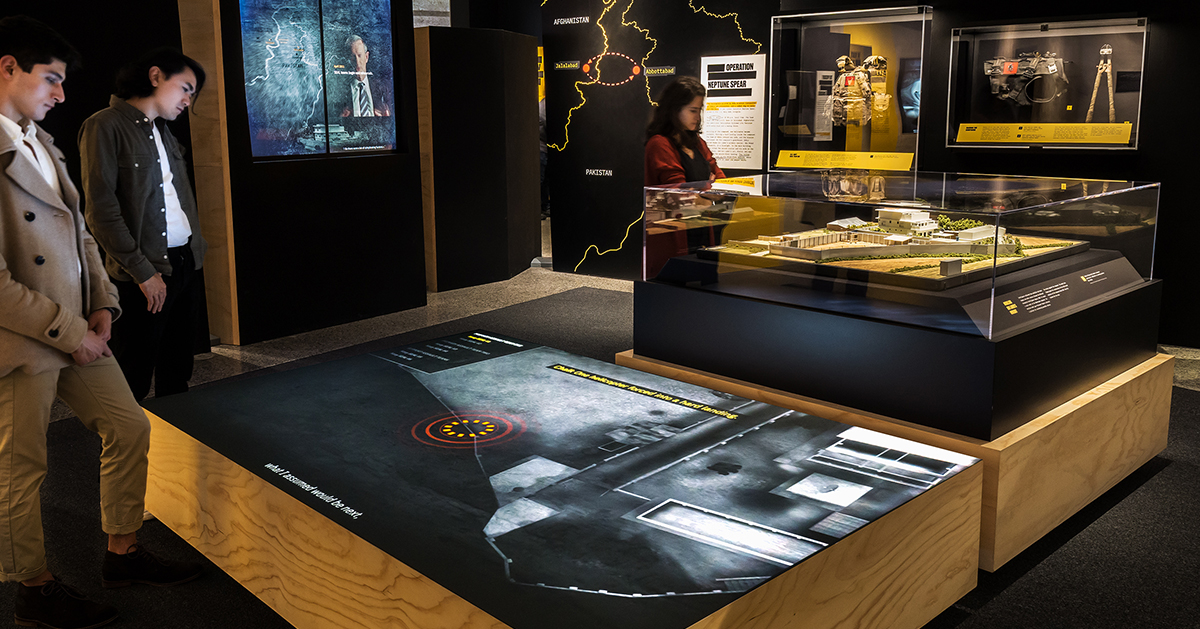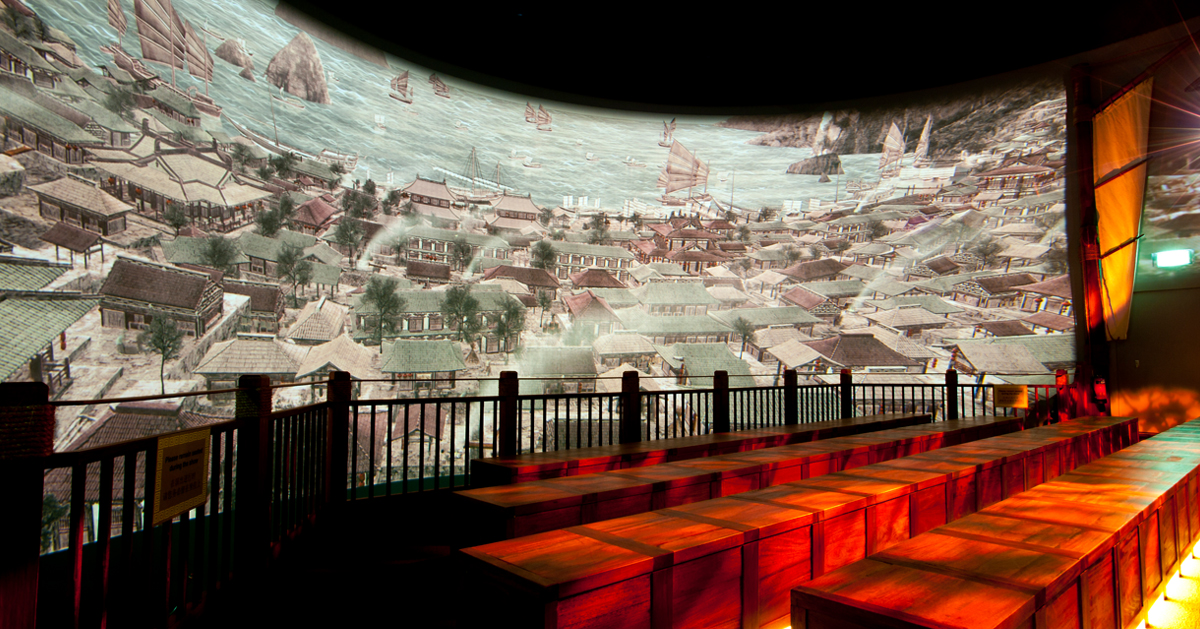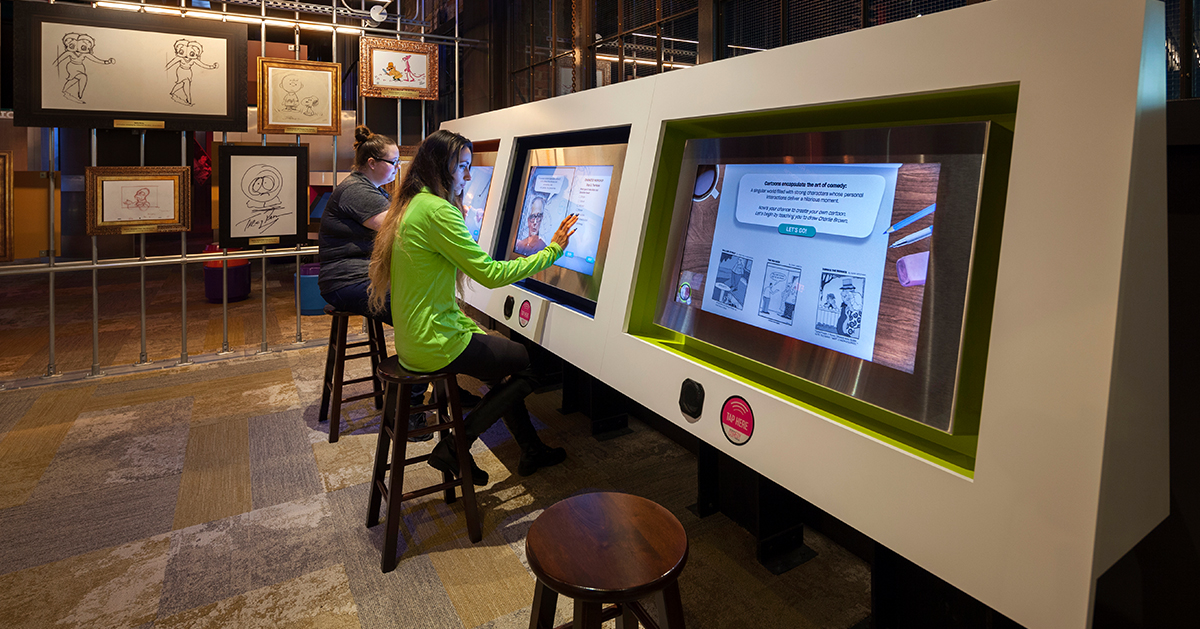
Does renovating your museum with experiential technology lead to greater ROI?
Museums have long played a role in educating, informing and delighting audiences. If you look at any city’s best things to do, museums are always in the conversation. As pandemic restrictions expire and domestic tourism picks up, museums are a prime spot for travelers. If improving revenue and attendance is top of mind for you, a museum renovation could be a worthwhile investment. Those that include immersive experiences powered by innovative audiovisual (AV) technology could be even more worthwhile.
Through this story, we’ll review the current landscape, the types of renovations that can drive ROI and the key benefits of using technology to enhance guest experiences.

The Current Museum Landscape
Museums took an economic hit during the pandemic. Closures during lockdown put many museums at risk, and 60% of museums reported pandemic-related financial losses. While programs like PPP (Paycheck Protection Program) were a lifeline, an American Alliance of Museums (AAM) survey revealed museums are still experiencing an average of 62% of pre-pandemic crowds.
Prior to the pandemic, museums contributed over $50 billion to the U.S. economy each year. One of the top reasons is that they rank among the most trusted institutions. Their preservation efforts and ability to tell stories make them a draw for every demographic. Getting back to pre-2020 numbers won’t be an easy road. That’s why thoughtful museum renovations that provide exceptional experiences could be what attracts guests back, offering something they can’t create digitally.
Upgrading Museums: Creating Immersive Experiences
Immersive experiences can take guests to new worlds. Such installations combine technology, storytelling and spaces to educate, entertain and commemorate. Museums have been leveraging this concept for some time, realizing they can create pivotal and memorable moments.
There are key components to creating immersive experiences, and they complement the purpose of museums. These include telling stories, enabling interaction, engaging the senses and personalization. AV technology facilitates all that behind the scenes.
Here are some examples of these theories in action:
- The International Spy Museum: The museum moved to a new space and invested in immersive experiences. One that stands out is the “Undercover Mission,” which personalizes the guest journey. Interactive lanyards monitor visitor performance using RFID aerials and integration with exhibits and sensors.
- Dover Wartime Tunnels: This museum includes the tunnels under the White Cliffs of Dover, which were pivotal during the Dunkirk evacuation. The plan was to project archival footage and photos on the tunnel walls while also mixing in sound effects. The project was a success thanks to technology, such as interactive displays, projection mapping and special AV controls.
- Being Brunel: The museum showcases one of England’s most famous inventors, Isambard Kingdom Brunel. The question was how to demonstrate his brilliance. The answer was to bring guests into Brunel’s mind, which incorporates a four-projector immersive show inside a giant 8-foot recreation of Brunel’s head. Surround sound adds train steam effects while smells of cigars and engine oils engage the nose. It’s a full sensory experience made possible with innovative AV.
In each of these inspiring exhibits, you’ll notice that they consider people first design. They allow modern visitors to relate to moments and people from eons ago. That’s the goal of any museum, and these are just a few examples of what a museum renovation could include. There are even more reasons that technology enhances guest experiences.

Technology Also Makes Museums More Inclusive
Equity and accessibility are critical to any public space that welcomes visitors. These updates provide a way to support those with a range of disabilities that can degrade experiences. For example, captioning and audio descriptions help the hearing impaired. Creating simple user interfaces with neutral colors and multiple input options (touch, gesture or control by mobile devices) helps those with vision challenges.
A more inclusive environment facilitated by AV technology can make any space more hospitable. In turn, that investment delivers real ROI. And that’s not all it can do. It can also reach younger audiences.
Younger, Digital Natives Are Keener to Visit Technology-Enabled Museums
Technology is a great connector, especially for those who have been around it their entire lives. It offers great appeal to millennials, Gen Z and beyond. When you update museums with immersive experiences, you can forge a long-lasting relationship with a younger crowd who will want to return and be advocates for your museum on social media.
Those investments you make today can continue into the future, as well.

Initial Tech Investments Keep Paying Off
Another consideration in weighing cost and return is that implementing technology can make spaces more dynamic. For example, you can easily trade out content on screens and interactive displays to complement another exhibit. It’s reusable in this way and can contribute to future experiences without additional costs.
With all the advantages that technology brings—engagement, personalization, equity, connection and more—are there any concerns?
Modernizing Old Museums: Technology Is Not the Enemy
While technology is new, many museums are old. Does updating them with modern components impact their integrity? It’s certainly a question the industry has. Many museums are places of beautiful and historic architecture. No one’s suggesting diminishing this in any way. It’s part of the story.
However, that doesn’t mean that modernization can’t improve the spaces and create a more dynamic and inviting space. The key is to balance things. Adding accessibility technology won’t take away from the buildings. And most AV technology doesn’t require significant overhauling of spaces that would eliminate charm. You have to determine what will appeal to your guests of today and tomorrow and be open to things like interactive displays or beamforming for sound localization.
Museums + Immersive Technology = ROI
In considering museums renovations, you have to do the math. An investment in any organization expects returns. To ensure you hit this, you first have to define your objectives and how they’ll lead to increased attendance. It all comes back to creating experiences that guests can only find at your institution. The more you can engage them and connect with them, the higher the likelihood of seeing vast returns.
The formula isn’t perfect. It requires a strategic vision and strong partnerships between museums, experiential technology companies, AV designers and integrators and other stakeholders. When such minds come together, the results can be amazing, helping you share important stories in a whole new way.
Chris Johnson
Chris Johnson, Vice President of Sales at Electrosonic, brings almost 25 years’ experience in the cultural market to provide expert, first-hand insight into the award-winning technology strategies and trends that are driving innovation and outstanding visitor experience in museums, visitor centers, heritage centers and other cultural sites around the world.










.jpg?width=1500&height=995&name=ELC501_N17_medium%20(1).jpg)


![[Learn how to promote equity and accessibility in your space]](https://no-cache.hubspot.com/cta/default/5104351/fb1048c8-f79b-44b8-9295-6ca0a97315d3.png)







































































































































































































